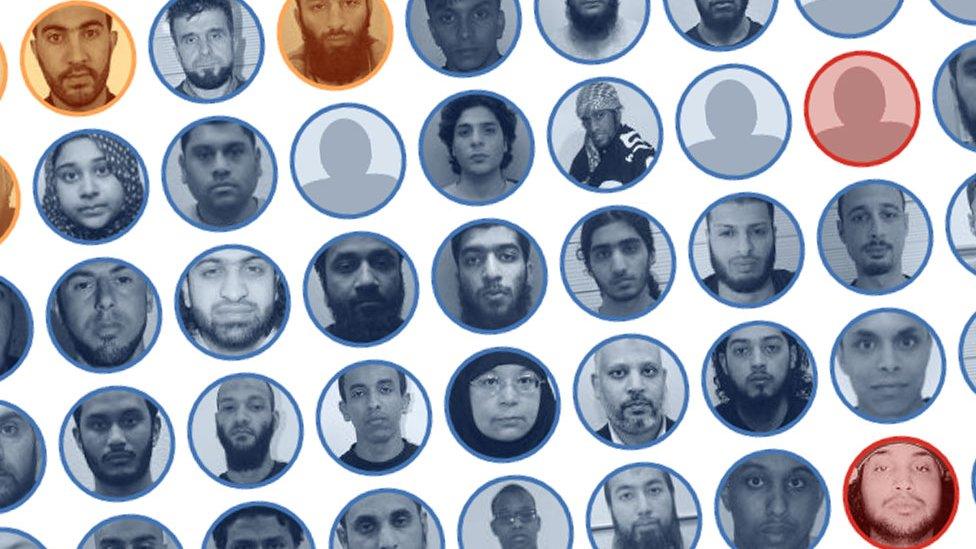Syria war: Last of British IS 'Beatles' gang captured by Kurds
- Published
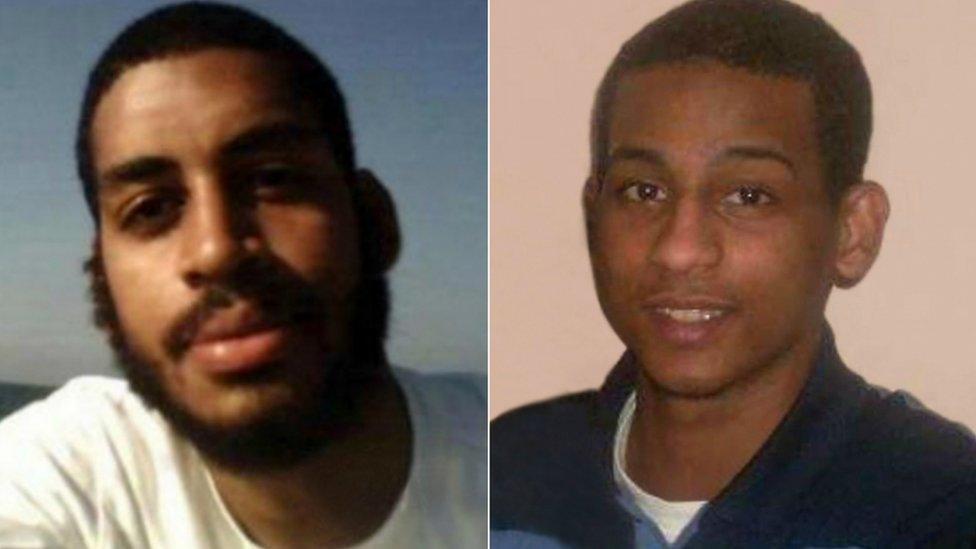
Alexanda Kotey, left, and El Shafee Elsheikh were the last two members of the cell at large
Two British men believed to be members of a notorious Islamic State group cell have been seized by Syrian Kurdish fighters, US officials say.
Alexanda Kotey, 34, and El Shafee Elsheikh, 29, were the last two members of the cell to remain at large.
The four, all from London, were nicknamed "the Beatles" because of their British accents.
US officials said the "execution cell" had beheaded at least 27 hostages and tortured many more.
Families of the men's victims have called for the two seized men to go on trial. Diane Foley - whose son James, an American journalist, was captured and beheaded by IS - told BBC Radio 4's Today programme she wants the men to face life imprisonment.
"Their crimes are beyond imagination," she added.
Former IS hostage tells Today: I want justice not revenge
Nicolas Henin, a French journalist who spent 10 months as an IS captive, also told Today that he wanted justice. He stressed that any attempt to deny the men of their civil rights would only feed IS's claims of victimisation by the West.
Who were the IS 'Beatles'?
Mohammed Emwazi - dubbed Jihadi John, was the masked militant from west London who featured in gruesome IS videos, taunting Western powers before beheading hostages. Victims who appeared in those videos included British aid workers David Haines and Alan Henning, US journalists James Foley and Steven Sotloff, and American aid worker Peter Kassig. The alleged ringleader of the group, he was killed in a drone strike in 2015 in Raqqa, the former de facto IS capital in Syria
Aine Davis, also from west London, was convicted of being a senior IS member and ehe was jailed in Turkey last year on terrorism charges, after being arrested near Istanbul in 2015.
Alexanda Kotey, another west Londoner, took part in the torture of hostages, the US State Department says, external, and also acted as a recruiter for IS
El Shafee Elsheikh "earned a reputation for waterboarding, mock executions, and crucifixions", external while serving as the cell's guard, the US state department says
How were they captured?
The latest arrests were confirmed by US officials.
Officials quoted by US media said the two men had been captured by members of the US-backed Syrian Democratic Forces (SDF), who are targeting remnants of IS.
The UK Foreign Office, meanwhile, said it did not comment on individual cases or investigations.
Their capture was first reported by the New York Times,, external who noted that American officials had wanted to keep the news secret.
The aim was "to allow analysts more time to pursue the intelligence leads developed from their detention and prepare raids against unsuspecting Islamic State targets", the newspaper said.
The Syrian fighters who apprehended them told US officials in mid-January that the two may have been captured, and the men's identities were later confirmed using fingerprints and other biometric data.
The families of the men told the BBC they were not aware of the capture until the story was reported by news organisations.
What is the state of IS in Syria?
The Islamic State group's self-declared caliphate - its area of control - shrunk rapidly last year.
In October, the group lost its "capital" of Raqqa to the SDF. In the beginning of November, it lost Deir-al Zour in Syria on the same day as it lost al-Qaim in Iraq.
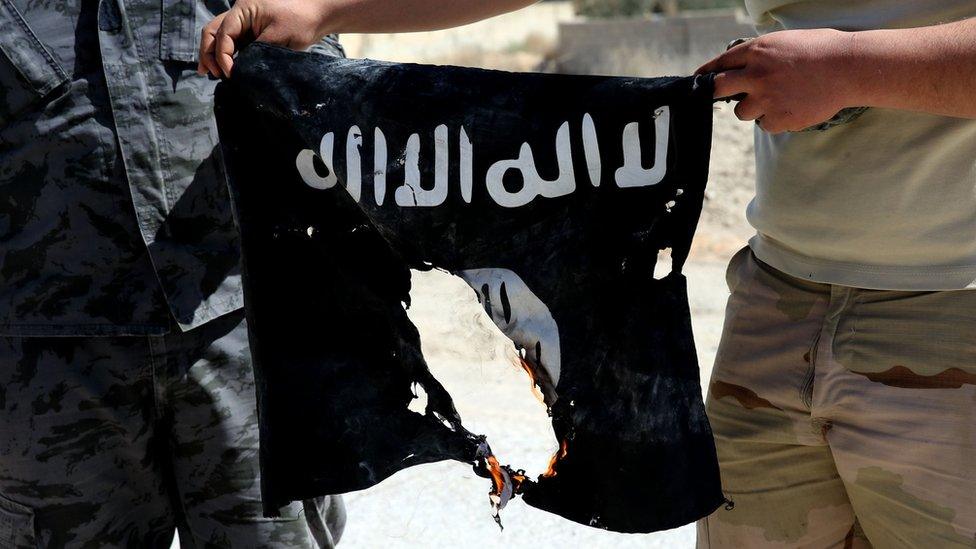
The Islamic State group has been all but destroyed in Syria
The SDF is an alliance of Kurdish and Arab fighters opposed to IS. The US-backed group has played a key role in driving IS from its strongholds in Syria.
The US has said it aims to maintain an open-ended military presence in the country to ensure the jihadist group's defeat.
However, the presence of large numbers of Kurdish armed forces in northern Syria has alarmed neighbouring Turkey.

Analysis: What happened to all the foreign fighters?
Gordon Corera, security correspondent
The pair are said to have provided valuable intelligence following their capture. That may be helpful in answering the wider question of what happened to the foreign fighters as the so-called caliphate disintegrated.
How many of the thousands of foreign fighters were killed and how many went to other countries or would seek to come home? These men will have been priority targets - but not the only ones.
Their capture also raises the issue of what happens next. They could be put on trial in the US, since they were allegedly involved in the killing of US hostages - but there may be some in the Trump administration who would like to send them to Guantanamo Bay.
And it is not clear if this is - formally - an issue for the UK Government, as there are reports the pair may have had their UK citizenship stripped from them using powers available to the Home Office.
US-backed forces may be celebrating, but IS has not been defeated
- Published11 August 2022
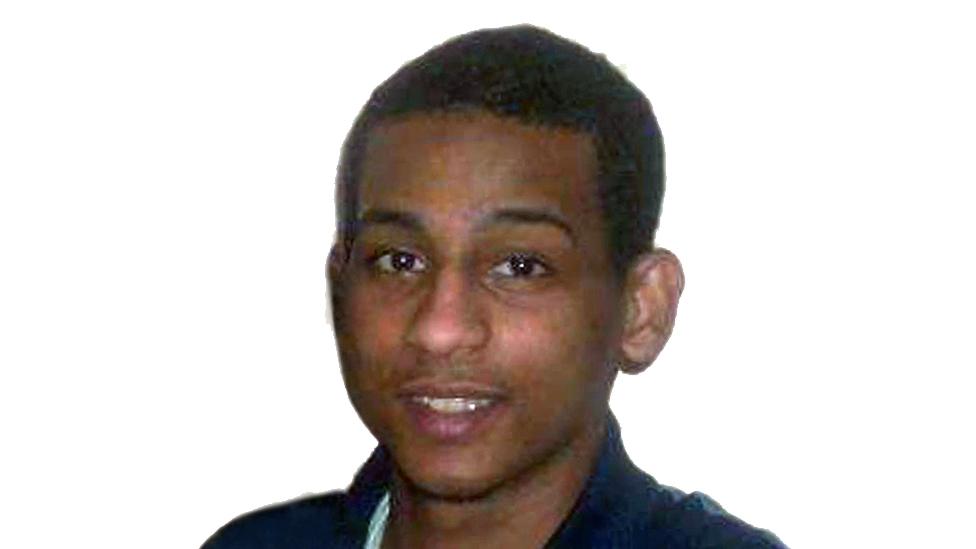
- Published8 February 2018
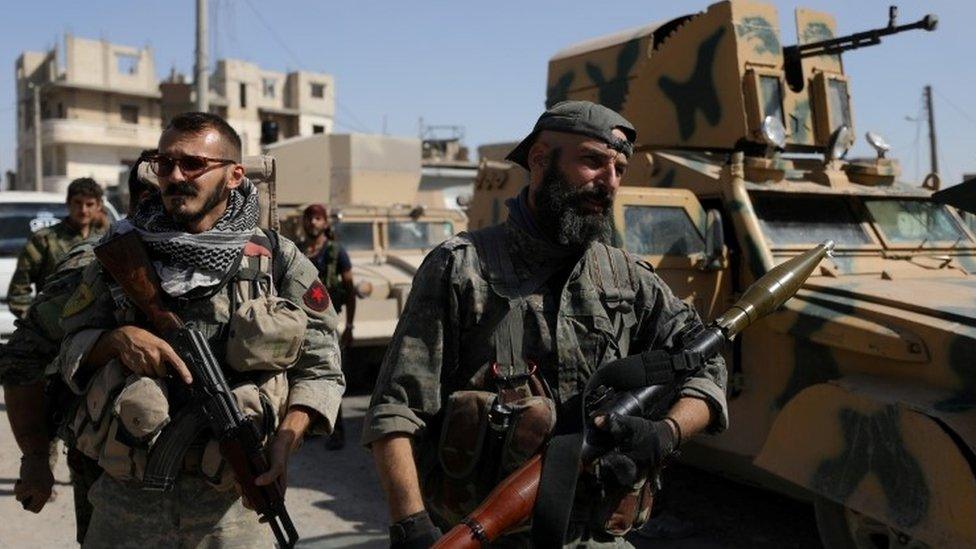
- Published12 October 2017
